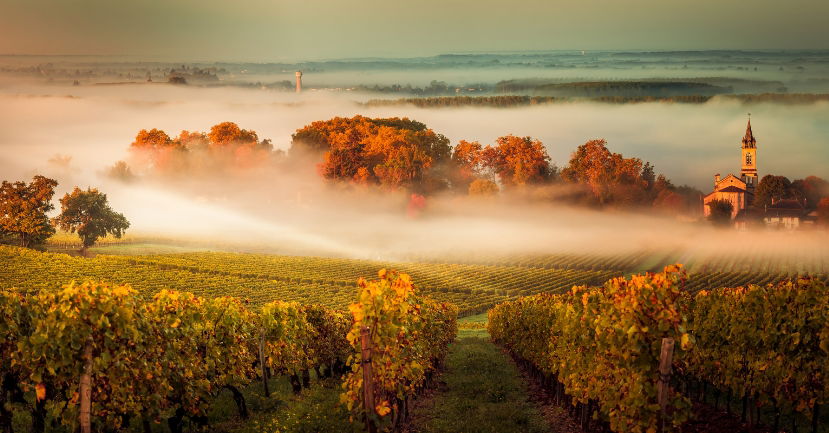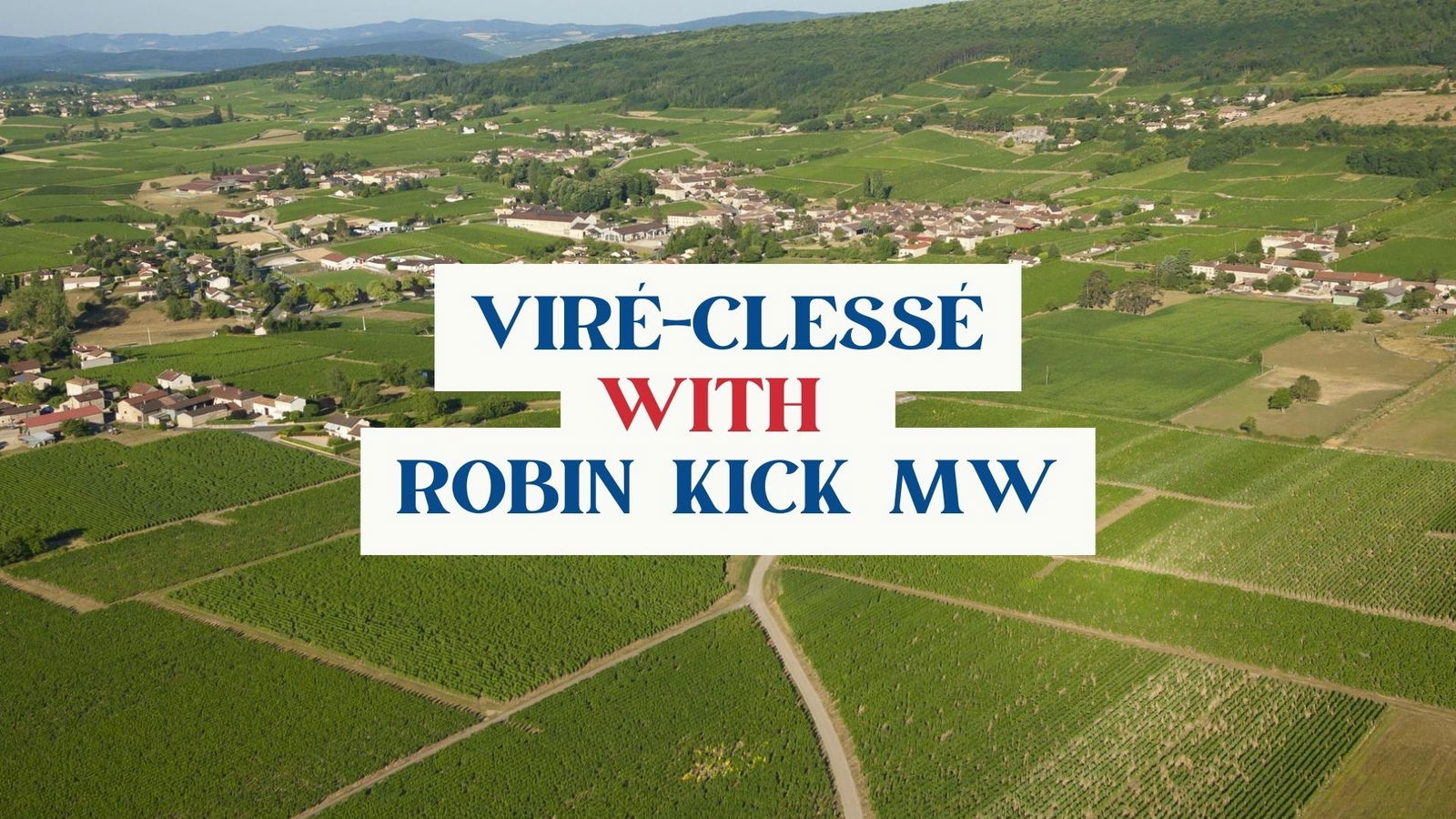BLOG
Wine Trends in 2020: Bordeaux by the Numbers
Jane Anson Tasting & Trends

Author of Inside Bordeaux, a book that has been described as the 'bible' by Le Figaro newspaper and a 'category buster' by Jamie Goode, Jane Anson has lived in Bordeaux since 2003. Here she takes a look at the wine trends that are shaping the region, its economy, its climate, the industry and its winemakers.
Regional Economy and Wine Market
Bordeaux in 2020 represents 110,800ha of vines. In AOC, a figure that has stabilised over the past few years (in 2016 it was 111,000ha). Between 2006 and 2016, in contrast, the surface area of vines in Bordeaux contracted by 10,500ha due to grubbing up vines to balance supply and demand and to concentrate on the highest quality areas of production.
Viticulture and the wine industry remains the number one employer in the Gironde region, supplying over 55,000 direct and indirect jobs. Three out of every 4 agricultural estate in the region primarily grows vines, and in total there are 5,660 winemakers who are producing an AOC wine. Of these, 56% are family-owned businesses, with an average vineyard size of 19.6ha (17.6ha in 2016), with the biggest vineyards found in Entre deux Mers and the Médoc. Around 5% of the overall vineyard surface of Bordeaux belongs to classified estates across both Left and Right banks.
Two-thirds of Bordeaux wine is sold by the 300 negociants on the Place de Bordeaux who sell to over 170 countries. Alongside the négociants are 77 courtiers, or wine brokers, who sit between châteaux and merchants, regulating the market.
Bordeaux in 2020 has 29 cooperative cellars who work with 39% of the region’s winegrowers and produce 23% of the overall Bordeaux production.
The region is split into 65 AOCs, producing 1% sweet white, 9% dry white, 4% rosé, 1% crémant, 12% Côtes de Bordeaux, 44% Bordeaux or Bordeaux Superieur, 11% St Emilion, Fronsac, Pomerol, 18% Médoc and Graves (representing 85% red wine production overall, 4% rosé and 11% white). The grape plantings are split into, for the reds, 66% Merlot, 22% Cabernet Sauvignon, 9% Cabernet Franc, 3% other. For the white grapes, they stand at 46% Semillon, 46% Sauvignon Blanc, 5% Muscadelle, 3% other.
Sales and Export Markets
Sales of Bordeaux wine dropped by 10% from March 2019 to March 2020, even before the disastrous impact of Covid on the market.
The domestic market represents 56% of Bordeaux wine sales today, with 44% going overseas. In the past five years, however, the sales of Bordeaux wines within France itself have fallen 20% (although to put that in context, the consumption of wine in France overall has dropped by 28% over the past 20 years, although beer is up 40% since 2010). Young French people report having more interest in drinking white wine that red, something that benefits other regions before Bordeaux, but perhaps points a route for future plantings. Overall wine sales from August 1 2019 to July 31 2020 saw the sale of 3.8 million hectolitres, the equivablent of 506 million bottles, a drop of 4% from the previous year.
The biggest export market in 2018-2019 remains China (300,000hl of wine, more than half the amount from just three years ago), with the United States just behind. Since the 25% tax was introduced by Donald Trump’s government, sales to the US fell by 12%. The third biggest market from 2019 to 2020 is the UK, but as the trade magazine Economie-Consommation said, ‘nobody knows what effect Brexit will have on the English consumption (of European wines)’.
The full impact of Covid on sales will become clearer over the next few months; but already in July the CIVB unanimously agreed to a ‘réserve interprofessionnelle’ (reserve stocks) to reduce the stocks of AOC Bordeaux/Bordeaux Superieur red wine over the period of 2020-2023, although only after official agreement following events such as loss of harvest due to hail or frost. The aim, according to president Barnard Fargues is to ‘reestablish the balance between offer and demand’ (this option was last in place in Bordeaux from 2011-2013). There is a crisis distillation in place that will cover 450,000 hectolitres, but that still leaves a significant oversupply.
Ann-Cécile Delavallade, at the head of economic service of CIVB said, ‘there have been a number of years where the wine production has exceeded the sales’, and she estimates that unsold stocks of AOC Bordeaux have reached 2.2 million hectolitres for the 2019-2020 campaign (a rise of 21% in one year), and for Bordeaux Superieur 1.05 million hectolitres, so up 14%.
In response to this, allowable yields for the 2020 harvest have been reduced – so down to 50hl/h instead of 54hl/h for AOC Bordeaux. The ODG (Organisiem de Defense et Gestion) of AOC Bordeaux/Bordeaux Superieur is also allowing the declassification of 10% of its red wine production into IGP (formerly Vins de Pays) to give flexibility over sales – although in this case, the reserve stocks can not apply; so estates must choose one or the other of these relief options. One example of this in practice is Jacques Lurton who will launch a sparkling ‘blancs de noir’ bottling under the Diane range of wines.
In the Vineyard: Organic and Biodynamic
In 2018 the Gironde had 641 certified organic estates representing 10,666ha of vines, with a further 2,950ha in conversion, a rise of 55% from 2017. There are also 47 properties certified biodynamic with either Demeter or Biodyvin, representing 904ha of vines (a rise from 43 estates and 865ha in 2017). 91 estates were certified sustainable with Terra Vitis in 2018, up from 62 estates in 2017, 91 in 2018.
Other environmental measures continue to grow across the Bordeaux region, with 85% of vineyard surfaces in 2019 using grass cover between the rows, so stopping the use of herbicides. 60% of vineyards are certified by one of the many environmental regimes (meaning either Terra Vitis, AB, Demeter, ISO and so on) – a rise from 35% in 2014 and 55% in 2016. The aim is for that to be 100% by 2025, with the Bordeaux Wine Bureau (CIVB) investing €400,000 in research into the reduction of pesticide usage each year, and overall €1.2M annually into other green research such as wine without SO2. Alongside this, for the first time in France, eight local ODGs, covering 80% of vineyard surfaces in Bordeaux, voted across 2017 and 2018 to change their winemaking charter to introduce environmental measures – with measures such as banning herbicides and measuring vineyard treatments. These changes have now been approved at a national level by the national institute of appellations, the INAO.

Climate Change: New grape varieties
In November 2020, the INAO is likely to approve the use of new grape varieties into the winemaking charter for AOC Bordeaux/Bordeaux Superieur. These will be allowed for 5% of surface plantings and 10% of the final blend of the wine, in reaction to the impact of global warming and climate change. These varieties are Marsalan, Touriga Nactional, Castets, Arinarnoa for the reds, and Alvarinho, Petit Manseng and Liliorila for the whites.
Please note that in November 2020 authorization will be given for PLANTING - so still will be a few years before the varieties make their way into the wine
New Cru Bourgeois
As of February 2020, the Cru Bourgeois has returned to its former three-tier system with estates graded by excellence. There are now 249 Cru Bourgeois estates, split across 14 Cru Bourgeois Exceptionnel, 56 Cru Bourgeois Superieur and 179 Cru Bourgeois. This ranking will serve for the 2018, 2019, 2020, 2021 and 2022 vintages.
The Exceptionnel estates are:
Haut-Médoc
• Château d’agassac
• Château Arnauld
• Château Belle-Vue
• Château Cambon la Pelouse
• Château Charmail
• Château MalesCasse
• Château de Malleret
• Château du Taillan
Listrac-Médoc
• Château Lestage
Margaux
• Château d’Arsac
• Château Paveil de Luze
St-Estèphe
• Château le Boscq
• Château le Crock
• Château Lilian Ladouys
Brand Protection
In June 2020, Bordeaux successful secured a criminal conviction over counterfeit wine in China – making them the first collective brand – either Chinese or international – to win a victory in criminal proceedings against forgeries and abuse of intellectual property. The case, which was held in the People’s Court of Shanghai Pudong, related to the Chengdu Wine Fair in March 2019, where counterfeit bottles were on display at a stand within the fair (with a further 100,000 bottles later discovered). The company received a suspended prison sentence, a fine of 100,000RMB for the company and a specific fine of 50,000RMB by the individual who carried out the offense. Bordeaux gained ‘geographical indication’ status in China in 2015, and 45 Bordeaux appellations (GIs) were officially recognised by the Chinese government in 2016. In 2019 China and the EU reached a bilateral agreement to protect 1OO European GIs in China and 100 Chinese GIs in Europe, and this conviction was the first successful implementation of the new protections.



